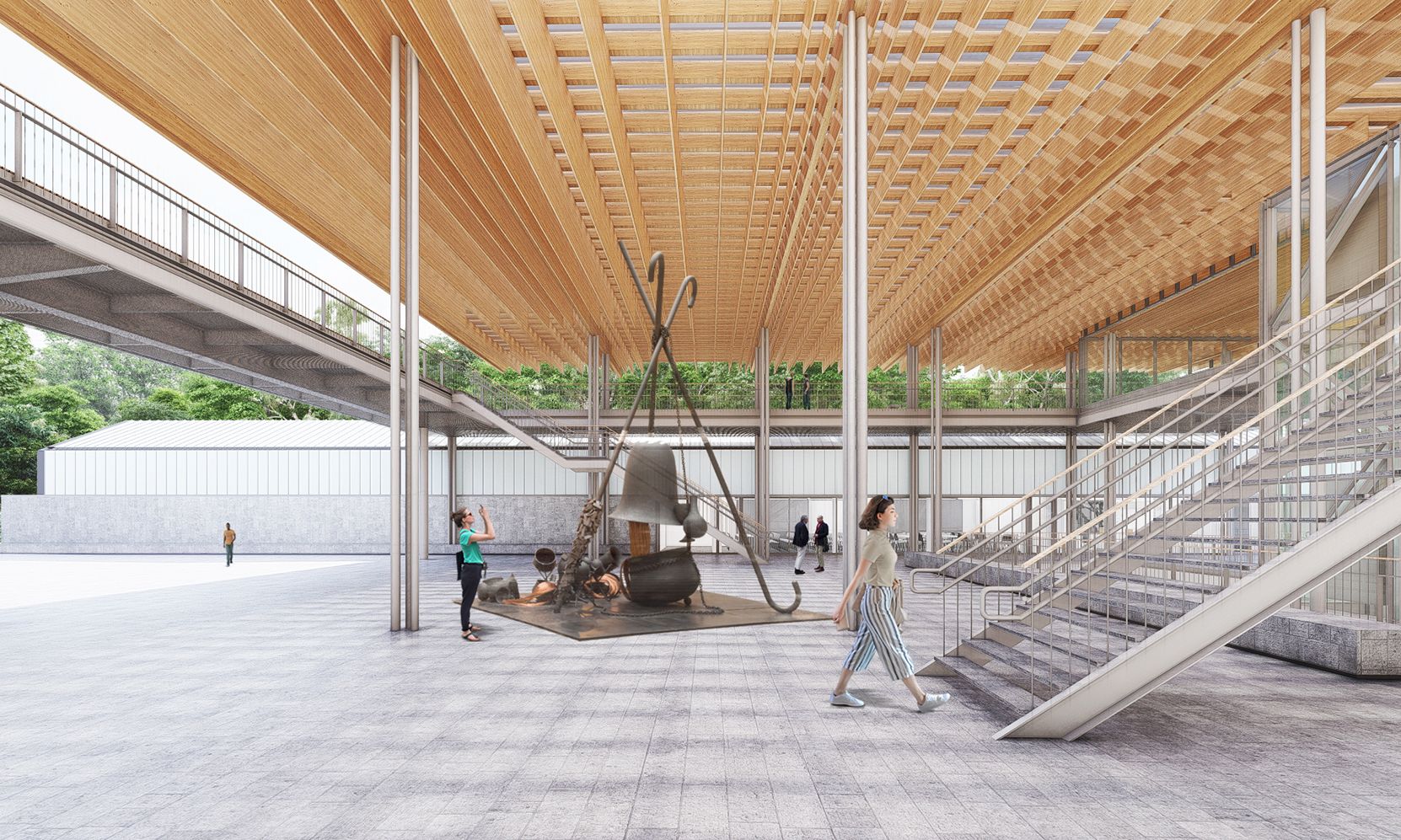The new building includes two main exhibition galleries, a research library, educational spaces and an open-air atrium for sculptures and performances
Courtesy Arquitetos Associados
Pinacoteca de São Paulo, the oldest art institution in São Paulo, opens a new contemporary wing, Pina Contemporânea, on 4 March. The expansion will make more of the museum’s permanent collection available to the public and help expand its programming. With over 20,000 sq. ft, it is one of the largest museums being launched in Latin America.
“Pina Contemporânea is not just an expansion of the exhibition area, but also offers other ways—contemporary forms—for the public to come into contact with art and culture,” says the museum’s general director, German art historian Jochen Volz.
The new Pina Contemporânea building was designed by Arquitetos Associados, in collaboration with Silvio Oksman, and has received Leadership in Energy and Environmental Design (LEED) Silver environmental certification thanks to features like solar panels and bicycle racks. Funding for the project came from a combination of public and private sources, with 55m reais ($10.6m) from the government and 30m reais ($5.8m) from the Gouvêa Telles family.
Similarly to Pinacoteca’s main space next door, Pina Luz, the new wing repurposes existing architectural elements. The sprawling grounds formerly housed a high school, parts of which were damaged in a fire. What remains of the original building will house the museum’s administrative offices. In addition, its external walls and recently rediscovered metal arches are being preserved. The new complex includes two main exhibition galleries, a restaurant, a café, a research library, educational spaces and an open-air atrium for monumental works and public performances—the inaugural piece in that space will be the sculpture Tríade Trindade (2001) by the late Brazilian artist Tunga.
Pinacoteca was founded in 1905 by the state of São Paulo and its collection of more than 100,000 works dates back to the late 19th century. It includes works by Brazilian Modernists such as Tarsila do Amaral and Cândido Portinari, and members of the Concrete and Neo-Concrete movements. The museum recently rehung its permanent galleries to better reflect the complexity of race and ethnicity in Brazilian society—and the historical lack of representation of Black and Indigenous artists in its collection. Pina Contemporânea will open with a solo show by the Korean artist Haegue Yang and a permanent collection exhibition organised by the museum’s chief curator Ana Maria Maia and curator Yuri Quevedo.

